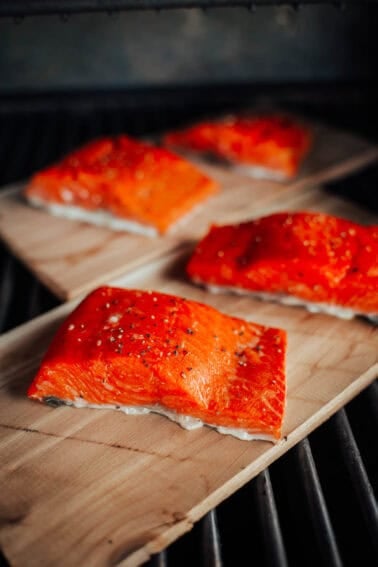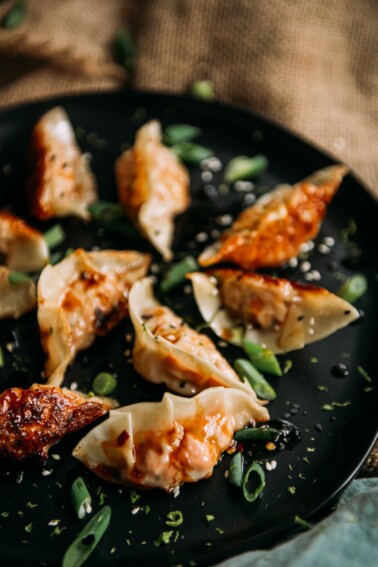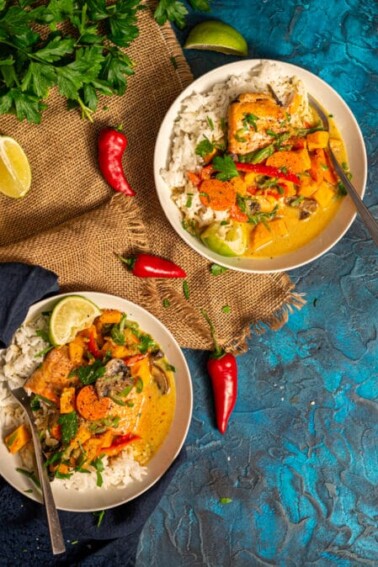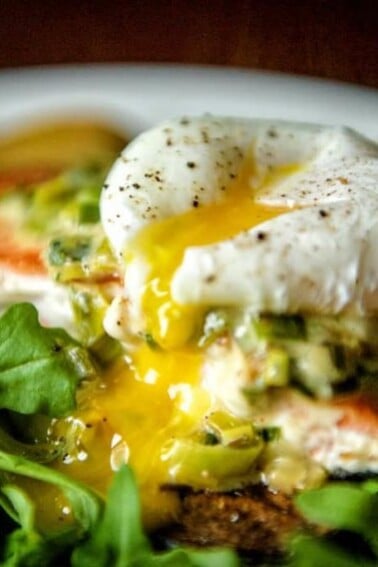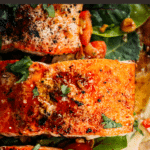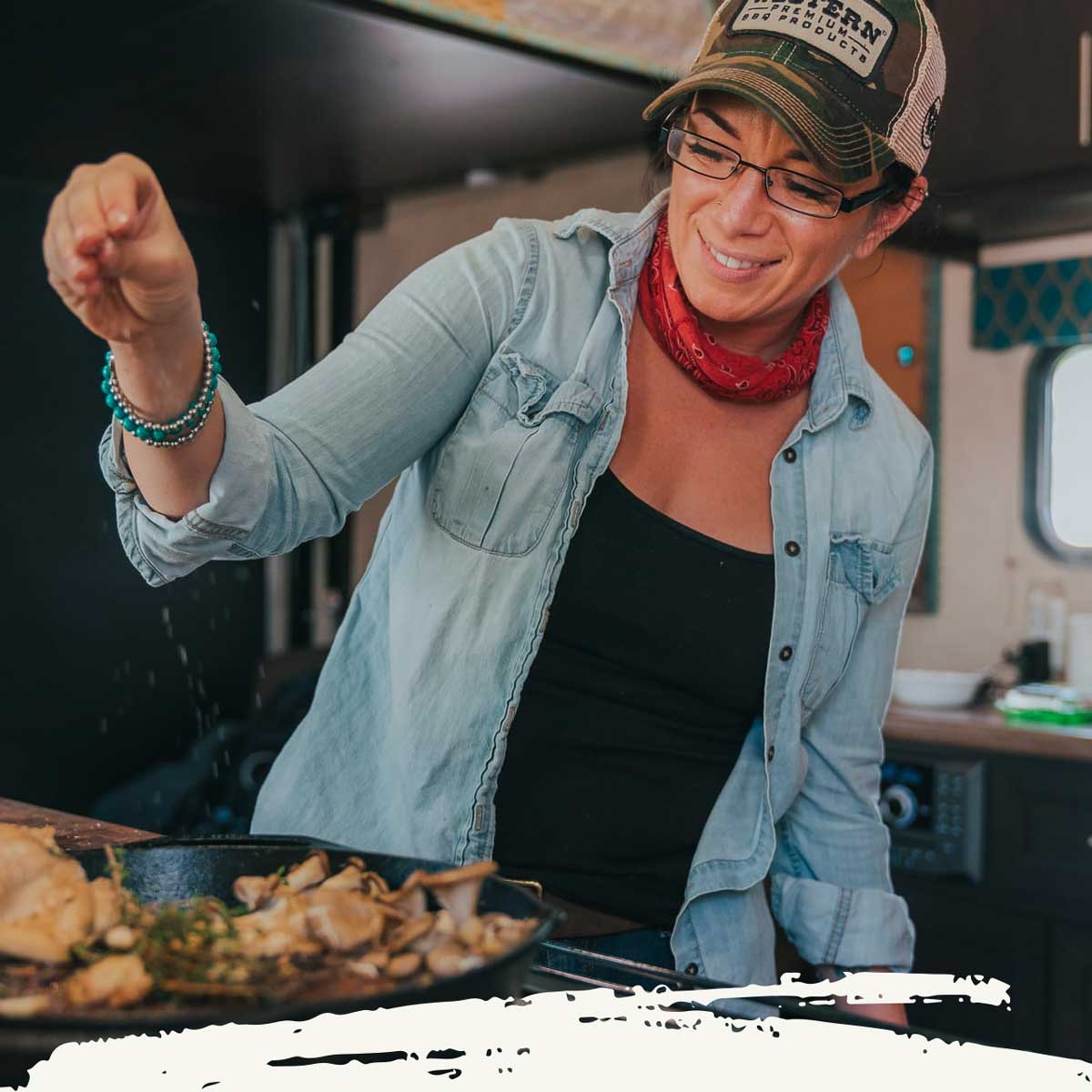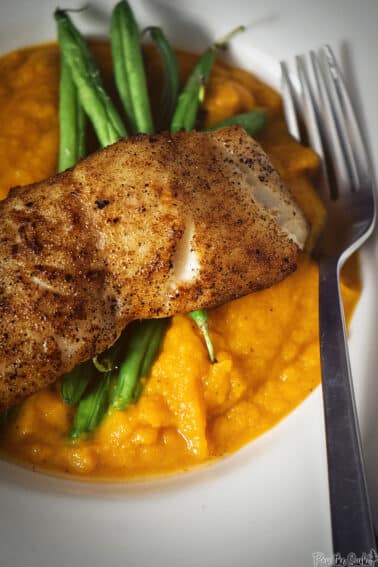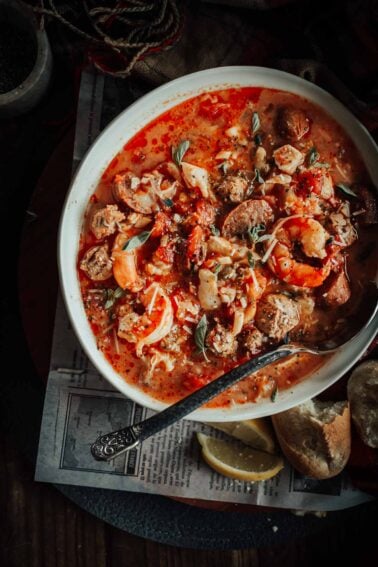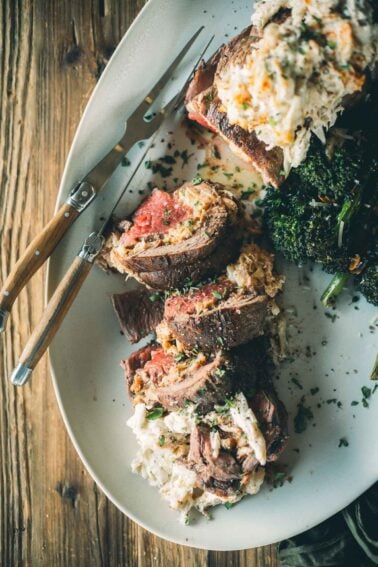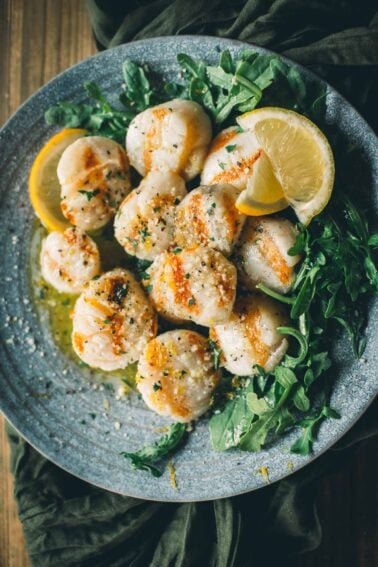Grilling fish can be one of the most intimidating things on the grill. But once you master it, the flavor is hard to beat! Like all things, a little practice goes a long way, and here are our best tips and tricks for how to grill salmon to perfection every time.
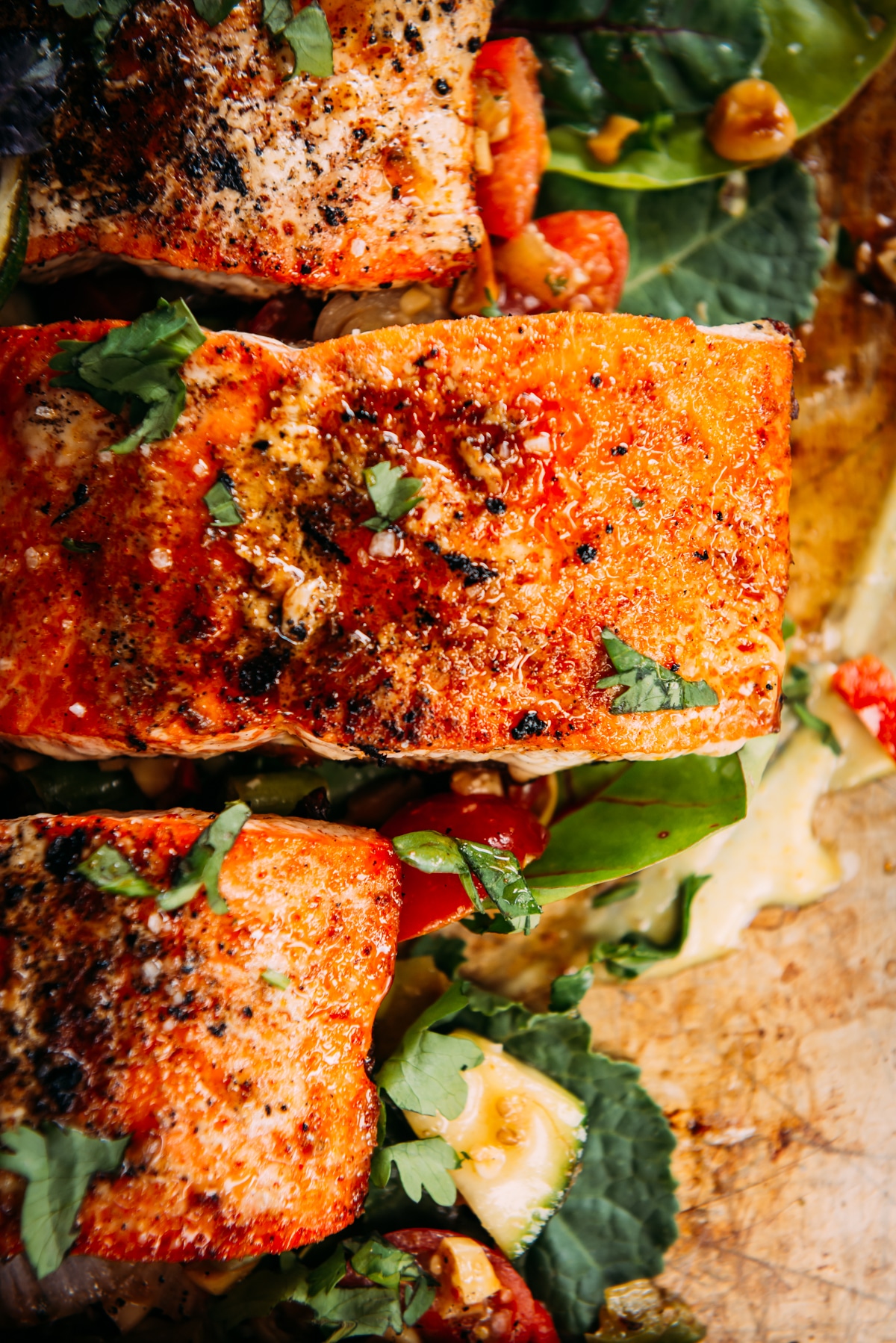
Table of Contents
Ah, salmon. It’s the king of fish, the superstar of the seafood world, and the perfect addition to any grill master’s repertoire. But let’s be real, grilling salmon can be a bit intimidating, even for the most seasoned grillers. But fear not, friends. With the right tools, tips, and a little bit of patience, you, too, can grill the perfect salmon recipe. So grab a cold one, fire up that grill, and let’s dive into the wild and wonderful world of grilling salmon!
How to Find Quality Salmon
Now, with fish, there’s a lot of overwhelm and data. However, we use these apps that to help us check if the product is a good choice or not!
Recently, we’ve researched Copper River Salmon, specifically how they harvest wild salmon, what they do to protect it, and how they monitor the fishing season, connecting us deeper with the product.
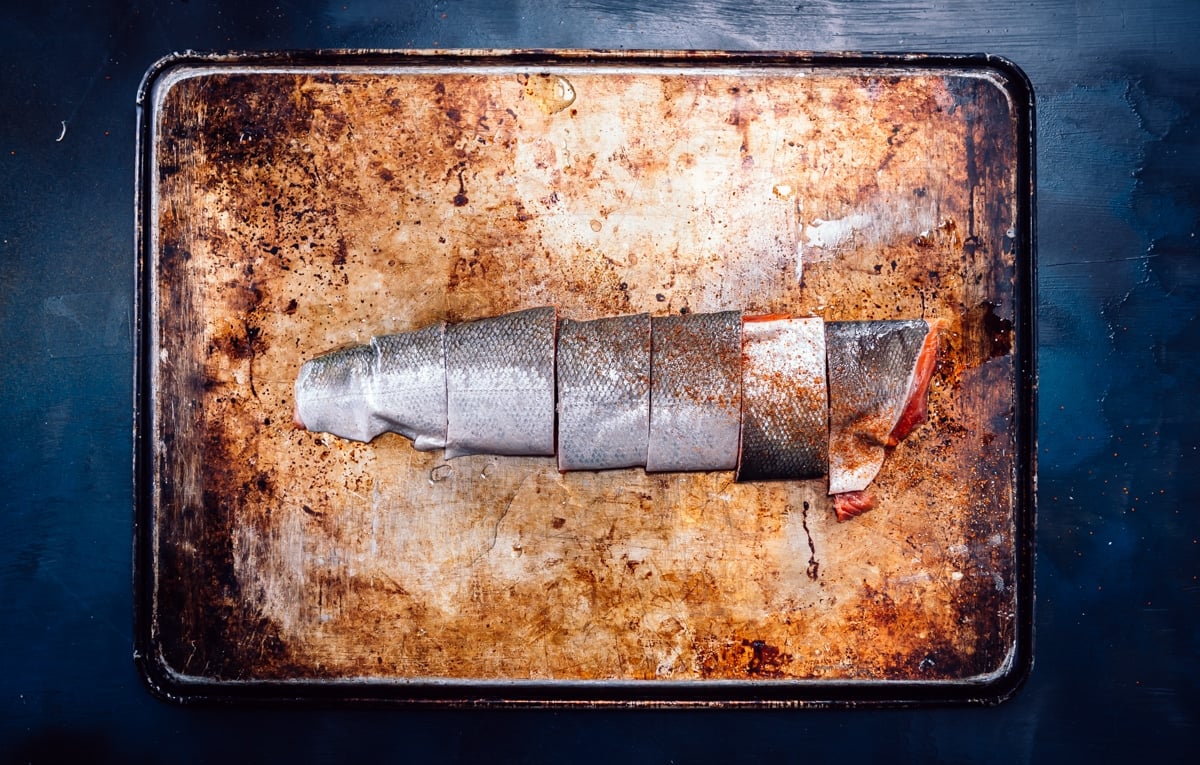
What to look for when buying Salmon:
Color
One of the first things to for when buying salmon is the color. Here are some tips to ensure you find the highest quality salmon:
- The deep red color is the first key to spotting Copper River Salmon.
- Atlantic salmon tends to be paler and more pink.
- Check to make sure no dyes were added to redded the fish.
- If you are looking for Copper River Salmon, make sure it says it on the tag and confirm with the fishmonger. Alaskan salmon doesn’t necessarily mean wild-caught Copper River Salmon, so be sure to confirm.
- The redder, the better: The salmon from the Copper River watershed have a distinct rich red color that is absolutely beautiful – and also packed with that healthy fatty Omega-3’s!
Did you know that Copper River Salmon can only be fished for 5 months a year, with very strict regulations on just how many can be harvested every single day? That’s why each of these fish is transferred as delicately as possible from the fishing vessels to ice before being processed.
Type
- King, as the name suggests, is the prime choice. Also known as Chinook, they are the biggest salmon with the highest oil content, making them rich in flavor. These are our favorite for simple methods, like blackening or grilling, when we really want to show off the flavor of the fish.
- Sockeye, also known as Red Salmon, has the longest season for Copper River, from May to July, and is the smallest of the lot. We love these filets for smoking salmon or making dips.
- Coho, aka Silvers, is our personal favorite. It comes in at the end of the season, larger than Sockeye but smaller than the mighty Chinook, with a flavor that we love for cast iron, baking, and grilling.
Did you know that after years of migrating the ocean, salmon return to the same glacier river making a 300-mile trip upstream back to their original birthplace to spawn? This is why they pack on the weight before making the journey! Neat, right?
Freshness
If the salmon is fresh and not frozen, do yourself a favor and make sure you cook it as soon as possible. Only store thawed salmon in the fridge for 24 to 48 hours before cooking. If frozen and sealed well, the fish can keep in the freezer for up to 9 months.
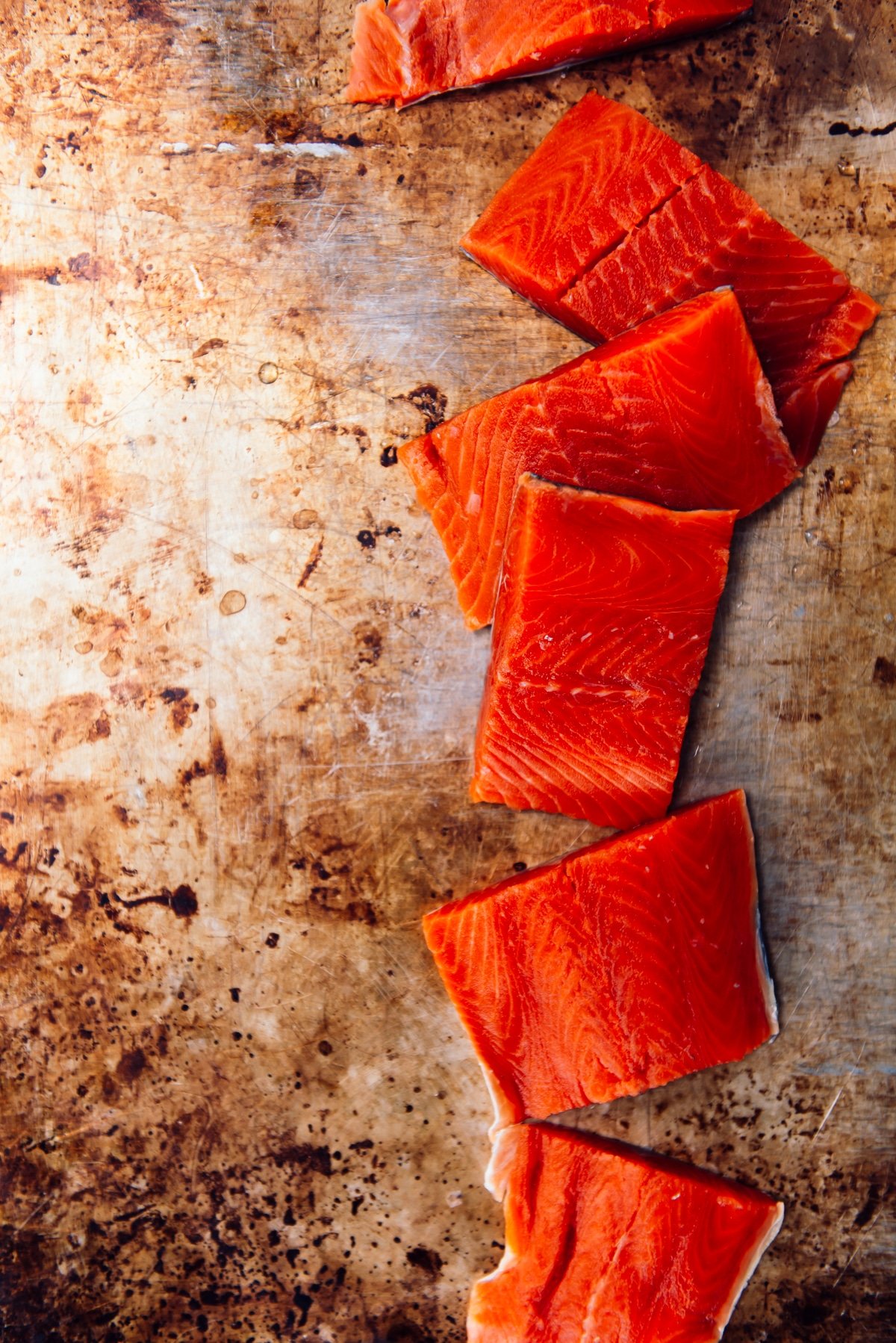
How To Cook Salmon On The Grill
on a gas grill
Gas grills are the perfect convenience for those who want to whip up some delicious salmon without the hassle of charcoal. Here are a few tips for grilling salmon on a gas grill:
- Preheat your gas grill to medium-high heat, making sure to give it a good scrub down first.
- Brush the grill grates with a little vegetable oil to prevent the salmon from sticking.
- Next, place the salmon skin-side down on the hot grates and let it cook for a couple of minutes, resisting the urge to flip it too soon.
- Keep an eye on the temperature because you don’t want to overcook that beautiful fish.
- When the flesh begins to turn opaque, it’s time to flip it over and cook it for a few more minutes. Don’t forget to check for those beautiful grill marks!
- Serve and enjoy!
On a Charcoal grill
Charcoal grills are the ultimate test of patience for those who want to grill salmon like a pro. But hey, if you’re up for the challenge, let’s get to it. Here are a few tips for grilling salmon on a charcoal grill:
- Start by lighting up the charcoal and letting it burn until it’s covered in white ash.
- Spread it out evenly and wait for the grill grates to get hot.
- Next, brush the grates with a little bit of olive oil and place the salmon skin-side down.
- Resist the temptation to flip it too soon because you want those beautiful grill marks.
- Keep an eye on the internal temperature because nothing ruins perfectly grilled salmon like overcooking it.
- When the flesh starts to turn opaque, it’s time to flip it over and cook it for a few more minutes.
- And if you want to add some extra smoky flavor, try cooking it on a cedar plank.
- Serve with a squeeze of lemon juice, and enjoy!
on a Pellet smoker
Pellet grills are the ultimate combination of convenience and flavor for those who want to grill salmon like a boss. Here are a few tips for grilling salmon on a pellet grill:
- Start by filling the hopper with your favorite wood pellets and preheating the grill to medium-high heat.
- Brush the grill grates with a little bit of vegetable oil to prevent the salmon from sticking, and place the salmon skin-side down.
- Keep an eye on the internal temperature and try not to open the lid too often because you lose heat and smoke every time you do.
- When the flesh turns opaque, it’s time to flip it over and cook it for a few more minutes.
- Check for those beautiful grill marks, and if you want to add some extra flavor, try a flavorful marinade made with soy sauce, brown sugar, and lemon juice. And if you’re feeling adventurous, try cooking your salmon in a foil pack with some vegetables for an easy and delicious meal.
- Serve and enjoy your perfectly grilled salmon!
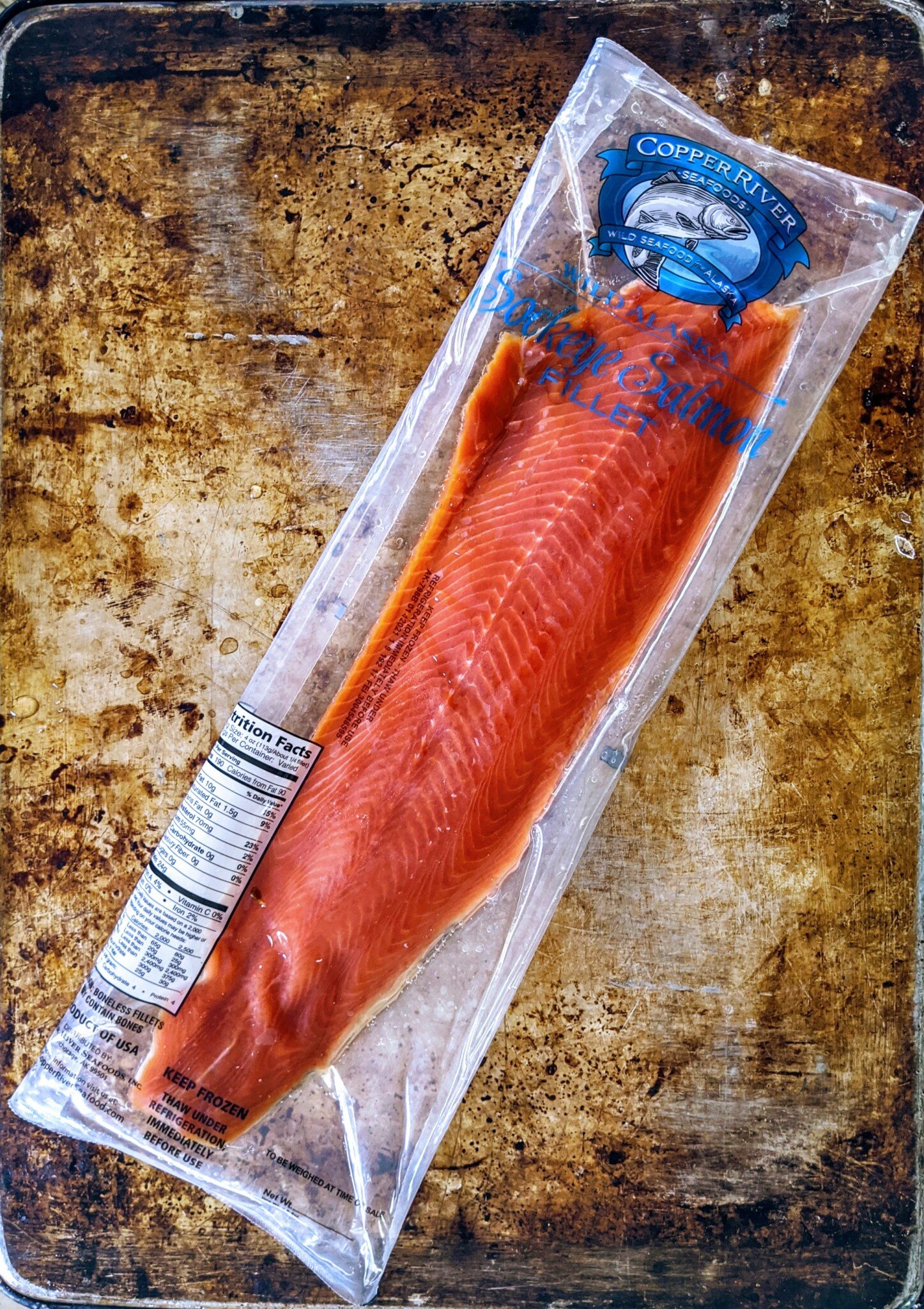
How Long To Grill Salmon
Grilling salmon is all about timing. Too short, and you’re left with raw fish. Too long, and you might as well use that salmon as a hockey puck. Generally, for every inch of thickness, you should grill your salmon for about 10 minutes at medium-high heat or until it reaches an internal temperature of 145 degrees F. And if you’re cooking thicker fillets or a large piece of salmon, adjust your cooking time accordingly.
Remember to keep an instant-read thermometer on hand and check the flesh side of the salmon to see if it flakes easily. So, don’t be afraid to keep an eye on that timer and use your best tools, like a fish spatula and a grill brush, to ensure the best results.
Storing and Reheating Grilled Salmon
So, you’ve grilled your perfect salmon, and you’re wondering what to do with the leftovers. Don’t worry; we’ve got you covered. Here are some tips for storing your grilled salmon:
- Make sure your salmon has cooled down to room temperature.
- Then, use a paper towel to gently pat the salmon dry and remove any excess moisture.
- Next, store it in an airtight container or wrap it tightly in foil and keep it in the fridge for up to three days.
And if you want to keep that rich flavor and smoky goodness intact, try storing it on a cedar plank. Or better yet, make some salmon salad or salmon fish cakes with those leftovers!
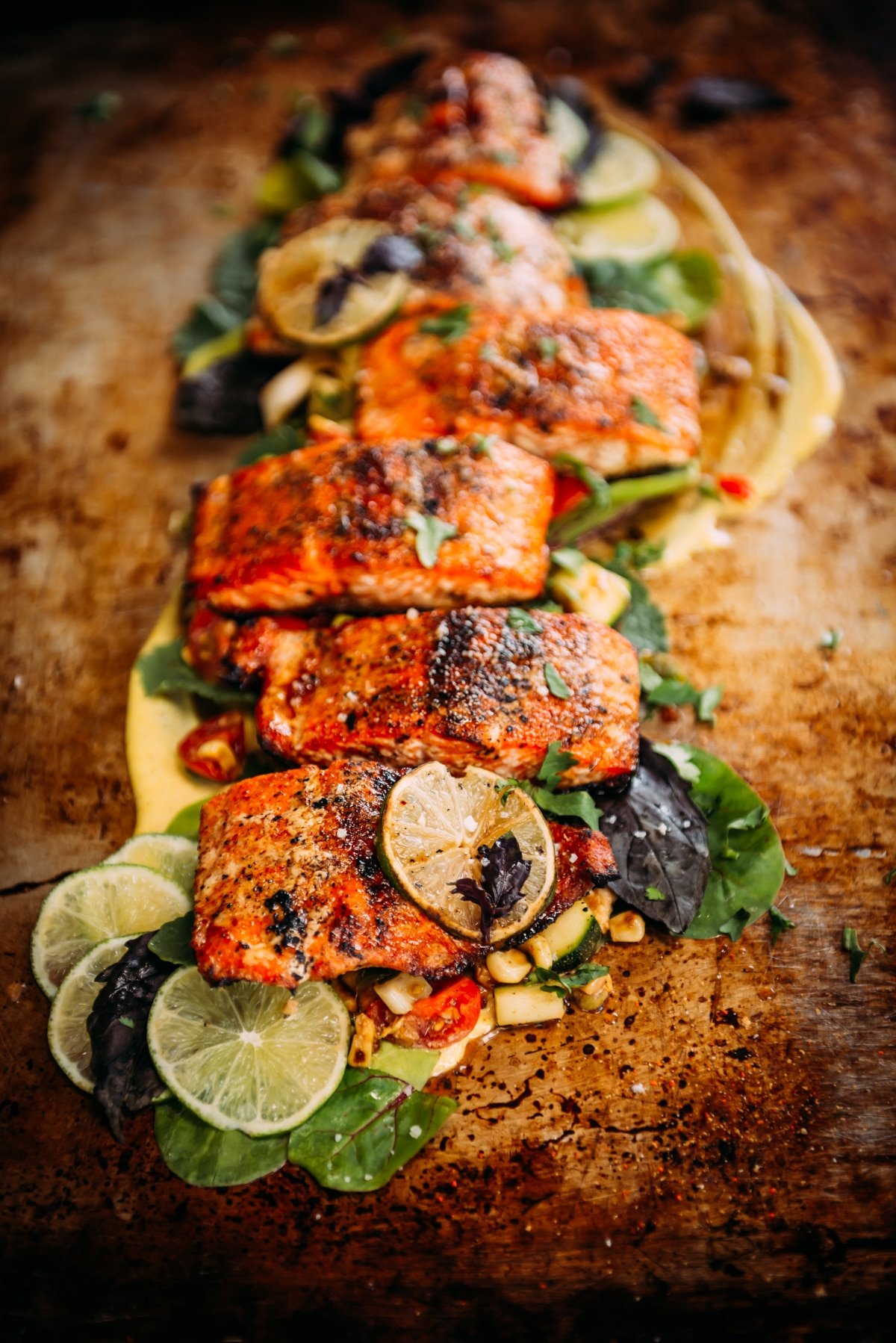
What to serve with grilled salmon?
Because grilled wild salmon is a luxury, we try to pair it only with food that enhances the salmon. Salmon goes great with fresh seasonal veggies, roasted or grilled. We love placing it over our turmeric aioli for a real burst of rich flavors.
It’s also wonderfully gently tossed in with pasta and lightly sauced. We also love pairing it with cabbage and fresh relish or chutneys. The balance of crunch from the cabbage with the texture of the fish is fun!
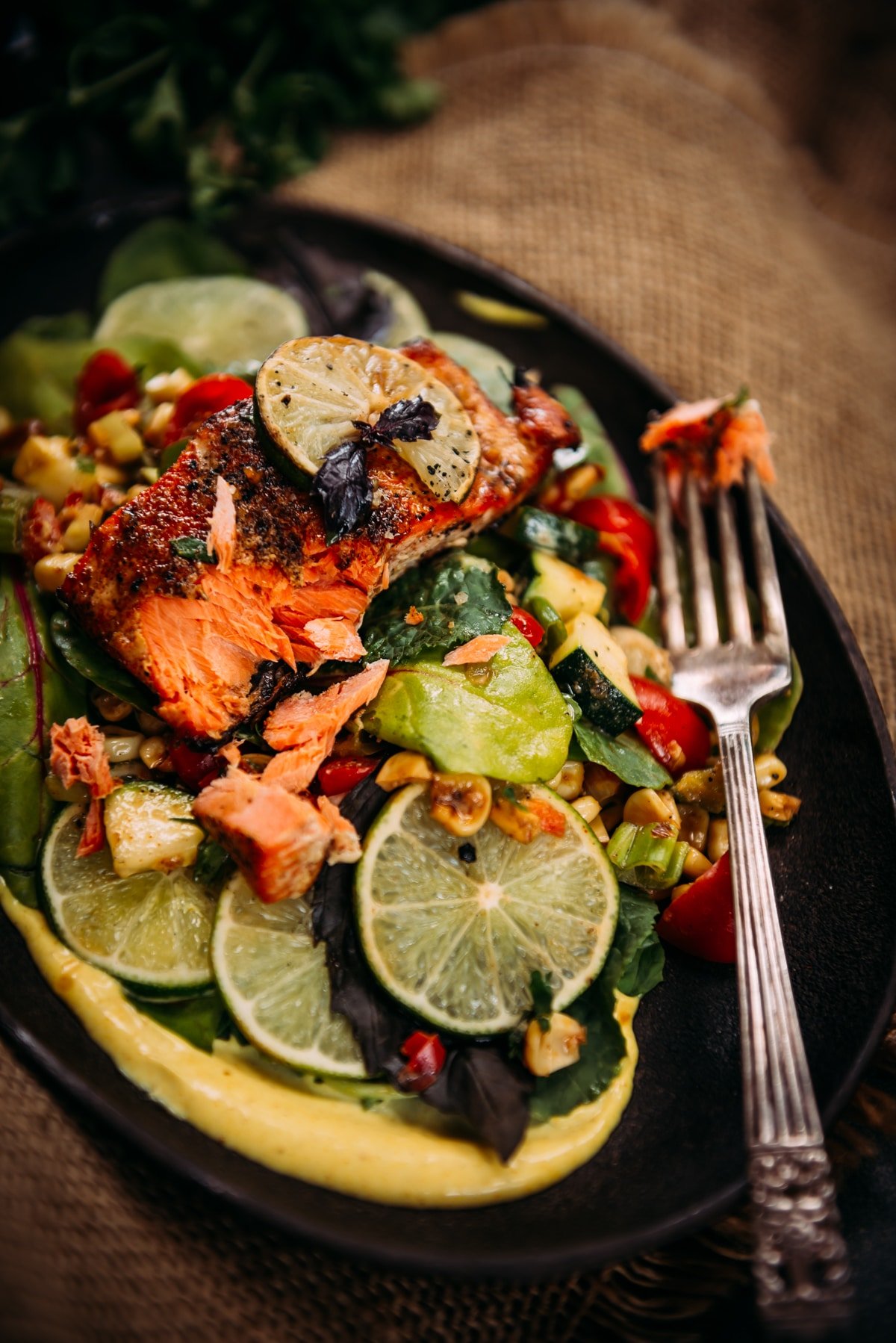
Grilling Salmon FAQs
To achieve perfectly grilled salmon, you should preheat your grill to medium-high heat. This usually falls between a temperature range of 375°F to 425°F. To ensure even cooking, let the grill heat up for about 10-15 minutes with the lid on before placing the salmon on it. If using a charcoal grill, wait until the coals have turned white-ash in color, and be sure to build a 2-zone fire, stacking the coals to one side for indirect heat.
Grill salmon at medium-high heat, (375 F to 425 degrees F). Cook the salmon for about 4-6 minutes per side, depending on the thickness of the fillet, until it reaches an internal temperature of 145°F, per the USDA.
A good rule of thumb is to cook the salmon for approximately 10 minutes per inch of thickness. The salmon should be opaque and flaky when it’s done.
To prevent salmon from sticking, start with clean grill grates. Any residual stuck on bits can ruin the natural non-stick quality of the grates. Then ensure that both the grill grates and the salmon are well-oiled. You can use an oil with a high smoke-point like vegetable, avocado, canola, or grapeseed oil. Apply a thin layer of oil to the grill grates using a brush or paper towel, and also brush the salmon with oil before placing it on the grill.
It’s also important to avoid moving or flipping the salmon too soon; give it time to develop a crust and release naturally from the grill. If you’re met with resistance when trying to slide the fish spatula underneath, give the salmon another minute before flipping.
There are countless ways to season and sauce grilled salmon. Some popular options include:
Lemon-herb seasoning: Lemon zest, fresh dill, parsley, and minced garlic
Maple Brown Sugar: maple syrup, brown sugar, and salt
Teriyaki sauce: A store-bought or homemade teriyaki glaze brushed on during grilling
Garlic butter sauce: Melted butter, minced garlic, and chopped parsley
Honey mustard glaze: A mixture of honey, Dijon mustard, and a touch of soy sauce
Cajun spice rub: A blend of smoked paprika, garlic powder, onion powder, thyme, oregano, cayenne pepper, and black pepper
For fish, it’s best to cook to internal temp without trying to master perfect grill marks. We recommend a cast iron grill pan if you want crisp grill marks. But for a traditional grill, start by preheating your grill to medium-high heat and make sure the grates are clean and well-oiled. Use a rub or marinade with a little bit of sugar.Place the salmon fillet on the grill at a 45-degree angle to the grates. Cook for 2-3 minutes for the sugar to caramelize, then rotate the fillet 45 degrees in the opposite direction and cook for another 2-3 minutes. This will create the desired crosshatch pattern (diamonds). Flip the salmon and repeat the process on the other side. Keep in mind grill marks are just for show and not an indicator of perfectly cooked salmon.
Easy Salmon Recipes
Seafood
Smoked Cedar Plank Salmon
Seafood
Homemade Salmon Dumplings
Seafood
Quick Salmon Curry
Seafood
Pan Seared Salmon
How to Grill Salmon
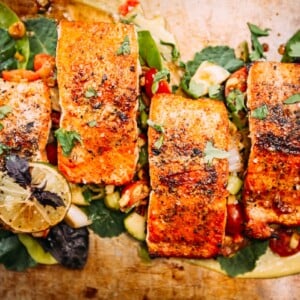
Recommended Equipment
- Fish spatula
Ingredients
For the Salmon:
- 1 whole salmon filet between 3 to 5 pounds, skin on, sliced into even portions
- 1 tbsp oil
- 2 tbsp adobo honey spice blend
- 1 tbsp Girl Carnivore Over Easy Spice Blend
- 1 tsp salt
For the sweet teriyaki sauce:
- ½ cup teriyaki sauce
- 1 tsp soy sauce
- 1 tsp brown sugar
- 1 tsp adobo honey spice blend
For the Succotash:
- 4 ears fresh corn charred evenly on all sides and corn removed from cob
- 1 zucchini chopped
- ¼ cup cherry tomatoes sliced
- 4 scallions minced
- 2 tbsp extra virgin olive oil
- Juice from one lime
- 1/8 cup Cotija crumbled
- Salt and pepper to taste
Garnish:
- Turmeric aioli
- Mixed greens
- 1 lime sliced thin
- Handfull of Thai Basil
Instructions
Make the charred corn succotash:
- In a large bowl, toss the grilled corn with the chopped zucchini, tomatoes, and scallions.
- Add the olive oil, lime juice, cotija cheese and toss to combine.
- Season with salt and pepper to taste. Set aside.
Prep the grill:
- Clean your grill grates. Prep your grill for around 375 degrees F, medium-high heat. If using charcoal, add maple or apple wood chunks to infuse a little smoke if desired.
Prep the salmon:
- Liberally rub the salmon with the oil.
- Sprinkle the flesh with the adobo honey, Over Easy blend, and salt.
Make the sweet teriyaki sace:
- Whisk the teriyaki, soy sauce, brown sugar, and adobo honey spice blend in a small bowl together.
- Remove 3 tbsp and reserve.
Grill the fish:
- When the grill is ready, place the salmon, skin side down on the grill.
- Brush the salmon with the teriyaki blend.
- Cover and cook for 5 to 7 minutes. It should look like the fish has started to cook through when you flip.
- Brush the salmon again right before flipping. Use caution as too much liquid can cause flare ups.
- When the salmon pulls back easily, flip and grill with the lid closed another 3 to 5 minutes.
- Remove the salmon at 140 degrees or when the fish flakes easily with a fork. Adjust timing depending on the thickness of your filets.
- Remove the salmon from the heat.
- Brush with reserved teriyaki blend and tent with foil to keep hot while plating.
Assemble & serve:
- To plate, place a dollop of the turmeric aioli onto your serving dish.
- Arrange a portion of mixed greens over the aioli.
- Place a heaping spoonful of the charred corn succotash on top.
- Nestle a salmon portion over it all and garnish with a fresh lime slice and minced basil.
Notes
Nutrition
Bookmark this recipe now!
